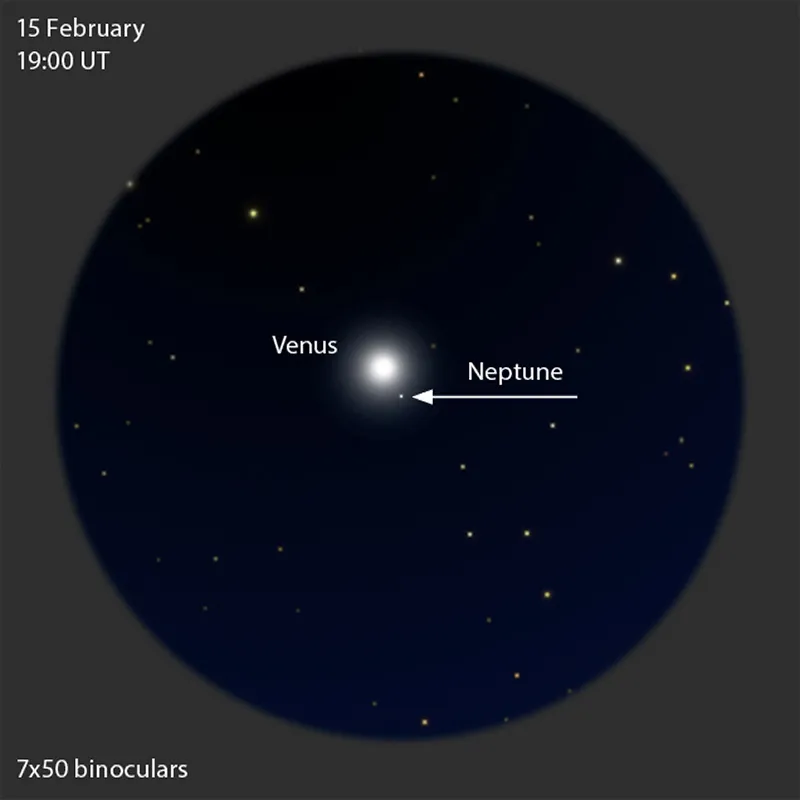There are to be some wonderful meetings - or conjunctions - between Venus, Jupiter, Neptune and the Moon in the latter half of February, enabling observers to see some interesting planetary conjunctions with both the naked eye and a pair of binoculars.
Bright planets Venus and Jupiter are easy to find in the evening twilight, low in the west after sunset.
Wait for the Sun to properly set then set a task: who can spot the planets first?
If the weather is reasonable, aim to start looking on every available evening from 20 February through to 10 March.
It’s unlikely they will all be clear though. Suggest drawing the arrangement seen on each evening using a finger held out at arm’s length for scale.
The Moon will join the scene around 21–23 February, adding a bit of extra excitement.
Get more key dates with our guide to visible planets in the sky this year.
Key Venus dates for February 2023

On the evening of 15 February, the brightest and the dimmest planets in the Solar System have an encounter.
As darkness falls, mag. –3.8 Venus and mag. +8.0 Neptune will appear just 20 arcminutes apart, low above the western horizon.
Close though this appears, earlier in the day, when Neptune sadly wasn’t visible from the UK, their closest approach at 12:26 UT had them just 47 arcseconds apart!
A more spectacular planetary conjunction comes later in the month and into early March, when Venus will have moved further to the east for an encounter with bright Jupiter.
The first highlights occur on the evenings of 21, 22 and 23 February, when a slender waxing crescent Moon lies close to both planets.
On 21 February, in order from the Sun, you will see first a thin 3%-lit waxing crescent Moon, then Venus followed by Jupiter, setting one after the other.
On the evening of 22 February, the Moon will have thickened to 8%-illumination, located slightly below the imaginary 7.5° line connecting both planets.
Finally, on 23 February, the now 15%-lit Moon sits east of Jupiter, the gap between the gas giant and Venus having closed slightly to 6.5°.
The gap between worlds continues to close and as darkness falls on 27 February, mag. –3.6 Venus appears 2.5° from mag. –1.9 Jupiter, an impressive sight in its own right.
Both planets are around 7° up when astronomical darkness falls, and with a clear western horizon, should appear quite stunning.
On the following evening, 28 February, the gap closes to just 1.5°.
The narrowest separation occurs on 1 March, when both planets will appear 39 arcminutes apart at 18:45 UT, and 16° up in a darkening twilight sky.
On the evening of 2 March, although the separation will have slightly increased, the pair will still look stunning, sitting just 45 arcminutes apart.
This guide originally appeared in the February 2023 issue of BBC Sky at Night Magazine.

